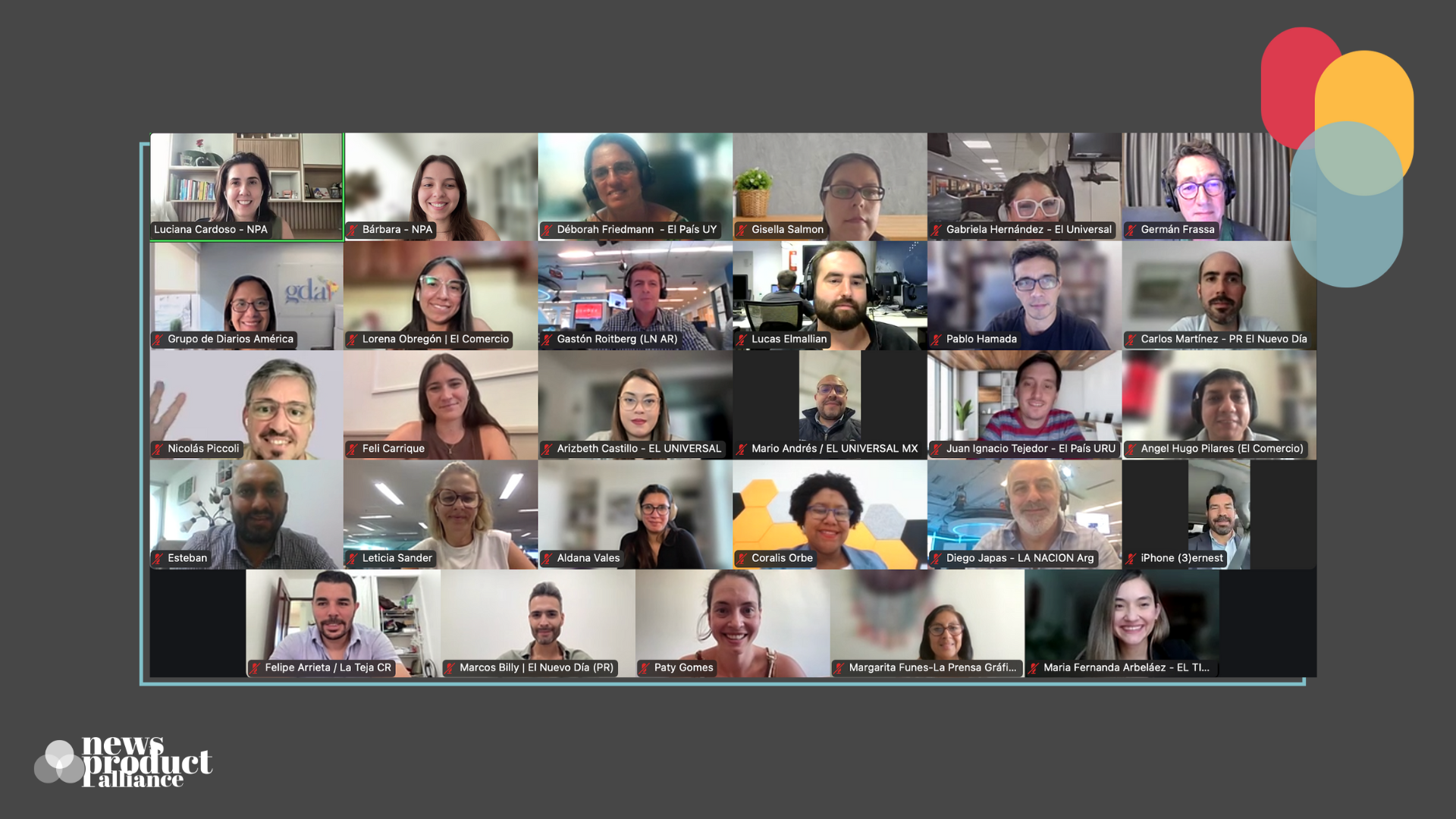From Idea to Prototype: Ten News Product Strategies from Latin American Media Organizations
What happens when you combine product strategy, coaching, and AI experimentation across Latin America’s leading newsrooms? You get news product prototypes — each rooted in real audience needs, designed through collaborative development, and tested by newsroom leaders from across the region.
The AI Product Sprint, a program led by the News Product Alliance in partnership with Grupo Diarios América, with support from the Google News Initiative, brought together 28 newsroom leaders from 10 countries to build solutions that address specific user challenges through product thinking and emerging technologies.
Building What Audiences Actually Need
All ten teams identified a distinct audience problem and developed a solution tailored to it. One-third have already started implementation, with others preparing to do so in the coming months. Their prototypes reflect the diversity of the region and the creativity of the product thinkers behind them.
In Peru, El Comercio created Chequea tu Comisaría, a platform that lets citizens in Lima rate their experience at local police stations, read stories from other users, and access district-based rankings.
El Tiempo in Colombia developed Migrando, a microsite for Colombians living abroad that offers curated news, migration guidance, and a map of community services around the world.
In Mexico, El Universal launched El Uni Twitch, a live news show on Twitch hosted by young journalists that blends news, memes, and audience interaction to reconnect with younger viewers.
La Nación, El Financiero, and La Teja in Costa Rica collaborated on No Coma Cuento, an AI chatbot that fact-checks political claims by pulling verified responses from their combined archives.
In Brazil, O Globo designed Bem Viver, a wellness platform offering expert-led courses, progress tracking, and challenges through newsletters and WhatsApp.
La Prensa Gráfica in El Salvador built ¡Hagamos Cuentas!, a digital platform that helps people understand their debt and receive personalized financial guidance tailored to local needs.
La Nación in Argentina created Conexión Argentina USA, a newsletter that connects Argentine migrants in the U.S. with news from home and a space to share their stories.
El Nuevo Día in Puerto Rico launched De Viaje, a travel newsletter featuring curated recommendations, flight alerts, and a casual tone; it reached 1,200 subscribers in its first month with a 66% open rate.
In the Dominican Republic, Listín Diario designed a Newsletter para Jóvenes with plain-language explainers, videos, and interactive content tailored to younger audiences.
El País in Uruguay released 3 Minutos, a WhatsApp-based news summary built in response to user demand for short, accessible daily updates on a familiar platform.
Inside the Sprint: Progress, Prototypes, and Product Thinking
The Sprint gathered 10 leading media organizations from across Latin America and immersed them in a process that included live classes, personalized coaching, and technical support. Teams engaged in audience research, articulated value propositions, defined product roadmaps, and built functional prototypes ready for testing and iteration.
Participants rated the program 4.58 out of 5 for classes and 4.73 out of 5 for coaching sessions. All of them said the program met their expectations. Knowledge growth was substantial: understanding of product strategy increased by 65%, and mastery of tools like the Lean Business Model Canvas grew by 144%.
“The most valuable thing of all is that with the process we were able to identify an audience need that we had not mapped out. We had the data, but not the identified need, and that was a great starting point,” said one participant.
The AI Product Sprint showed how product thinking and structured experimentation can help newsrooms better understand their audiences and act on that knowledge. As these prototypes continue to evolve, they offer valuable lessons for how journalism can meet people where they are, with products that are relevant, trustworthy, and built for impact.


